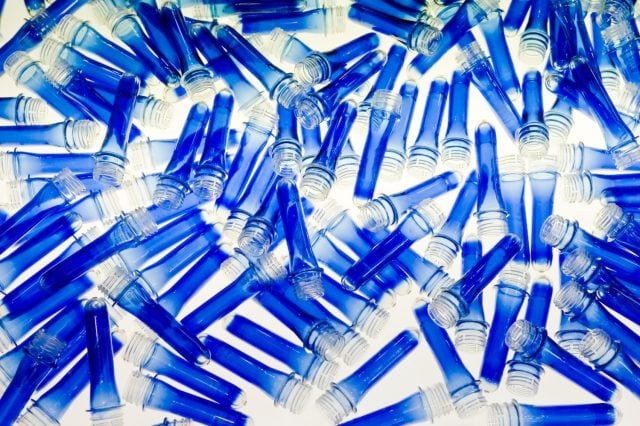The task of beverage manufacturers to make polyethylene terephthalate (PET) greener and more environmentally compatible is reflected on all levels: in the choice of raw material, i.e., also in preform design and fabrication, in the container blowing process and filling as well as in recycling and re-using PET containers.
From September 11 to 158, 2017, drinktec 2017 will highlight the material and its applications in
Show organizer Messe München says PET is the preferred form of packaging worldwide particularly for bottling of water and non-alcoholic beverages (CSD).
While the demand for CSD is rather stagnating from a global perspective, bottling water in PET continues to boom.
Many new developments of PET containers are also used in the dairy industry.
Consequently, drinktec has created PETpoint exhibition in line with its importance for bottlers on PET technology and presents all innovations with relevance for PET.
The exhibitor group on the subject of PET includes manufacturers of injection molding machines to produce preforms and stretch blowing systems for plastic containers, among others, but also filling machines for plastic bottles.
Representatives are also suppliers of raw materials and auxiliary materials for the manufacture of plastic containers as well as the producers of plastic bottles made from PET, PEN, PP, PE, HDPE or other plastics.
Machines and systems for recycling PET bottles and closures are on the other end of the life cycle of PET containers.
“Beverage closures have reached their lightweight minimum geometrically, and they thus make higher demands on the precision and repeatability of injection molding machines than ever before.
“With the new high-strength HD-PE materials, the requirements for plasticizing performance have also increased sharply.”
“A third trend is the increasing sensitivity of injector molders in matters of energy efficiency,” said Michael Feltes, head of the packaging business unit at Engel Austria in Schwertberg, Austria.
Machine manufacturers are increasingly employing the economic use of energy and resources as a selling point, both in their own companies and above all with customers.
“Every gram less of PET that we need for our bottle is an extraordinary resource saving calculated globally,” Prof. Matthias Niemeyer, CEO of KHS GmbH.
The mold-blowing machine manufacturer Sidel calculated that a 0.5-liter PET bottle weighed 28 grams in 1985, but today it has been able to reduce this to fewer than eight grams in an extreme case today.
Low use of recycled materials
In addition to the lightweighting, the use of recycled PET is a challenge of the future.
The trend to the bottle-to-bottle recycling is continuing unabated according due to low market coverage.
The use of recycled materials in PET containers is still negligible worldwide and is estimated to be about 5%.
However, major PET bottlers want to achieve about 25% share of recycled material.
Dr Thomas Friedlaender, PET recycling specialist at Krones considers the greatest challenge or recycling PET to be the diminishing quality of collected PET containers.
“Advanced sorting technology and continuous improvement of recycling technology are indispensable conditions to be able to produce usable recycled materials from them.”
According to Petcore, about 57% of marketed PET bottles were recycled In Europe in 2014, 6.8% more than in the previous year.
This corresponds to a collection of 66 billion 1.5L bottles.
Alternatives in demand
Consequently, drinktec will also highlight the latest possibilities for PET recycling and the use of alternative materials.
In the meantime, PET bottles can be made from almost 100% recycled materials, such as Coca-Cola has demonstrated in Germany with the introduction of a one-way deposit bottle for the product Coca-Cola Life.
The research for alternatives to PET is also continuing.
In a development project, containers made of polyethylene furanoate or PEF are to be produced, which can be produced from 100% vegetable raw materials, according to a consortium of Avantium and Alpla with participation of Coca-Cola and Danone.
Scientists at the University of Hohenheim want to use the root of chicory as a basis for this.
PEF bottles could be drawn thinner than PET bottles, reducing transportation costs as a result.










